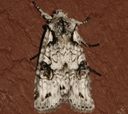Pinions
Lithophane
Classification
- Phylum: Arthropoda
- Subphylum: Hexapoda
- Class: Insecta
- Order: Lepidoptera
- Superfamily: Noctuoidea
- Family: Noctuidae
- Subfamily: Noctuinae
- Tribe: Xylenini
- Subtribe: Xylenina
- Genus: Lithophane
Pronunciation
How to pronounce Lithophane: /ˈlɪθoʊˌfeɪn/
These audio files are automatically generated. While they are not always 100% accurate, they are a good starting point.
Images






Summary
Lithophane is a genus of moths known for their 'square-shouldered' appearance, with various species found primarily in North America. These nocturnal moths undergo a distinct life cycle with larvae that predominantly feed on leaves of broadleaved and some coniferous trees. They have adapted to survive in diverse habitats, especially forests and woodlots, and are characterized by their unique coloration and patterns.
Physical Characteristics
Forewings usually gray to brownish with indistinct lines; adults exhibit a characteristic 'square-shouldered' appearance. Larvae are typically green or grayish with variable pale or dark markings.
Identification Tips
Look for the distinctive 'square-shouldered' appearance when in rest position. Adults are nocturnal and are attracted to light.
Habitat
Mixed and deciduous forests and woodlots, primarily in areas with broadleaved trees and shrubs.
Distribution
Much of North America south of the Arctic, primarily in the northern United States and southern Canada.
Diet
Larvae primarily feed on leaves of broadleaved trees and shrubs; some species feed on conifers such as cedar and juniper. They may also feed on other caterpillars, including their own siblings.
Life Cycle
Adults emerge in fall, hibernate during cold months, then are active again in spring. Larvae feed in spring and summer, pupate, and complete their life cycle by emerging as moths in the fall.
Reproduction
One generation per year; overwintering occurs as adults.
Predators
Not specifically mentioned, but larvae have been observed feeding on winter moth caterpillars and sawfly larvae, suggesting they may fall prey to similar predators.
Ecosystem Role
Help in pollination and serve as food for various predators at different life stages.
Collecting Methods
- Light trapping
- Baiting
Preservation Methods
- Pinning
- Envelope storage
Tags
- Lithophane
- moths
- Lepidoptera
- Noctuidae
- North America
- nocturnal
- caterpillars